When the top 30 players on the PGA Tour assemble in Atlanta for the 2025 Tour Championship, the pros will get a second bite of the apple at Andrew Green’s restored East Lake Golf Club, which reopened just ahead of the 2024 tournament. Known best as the course where Bobby Jones learned to play—back in the days when it was part of the Atlanta Athletic Club—East Lake will host its 25th Tour Championship this year, but it’s not the only course that has served in that role. Seven other layouts have played host to the Tour Championship since the event’s inception in 1987.
Here are the eight Tour Championship venues, ranked top to bottom.
1. Pebble Beach Golf Links—Pebble Beach, Calif.
Year(s) hosted: 1988
Ranked No. 15 in The LINKS 100 world rankings and in America’s top 10 by virtually everybody, Pebble Beach is a six-time U.S. Open venue, in addition to playing host to the AT&T Pebble Beach Pro-Am every year since 1947. When it comes to memorable oceanside golf holes, Pebble Beach’s stretch of 4 through 10 is the most spectacular on earth. And there’s no walk in golf that compares to the stroll up the 18th fairway at Pebble along the curving shore of Carmel Bay.
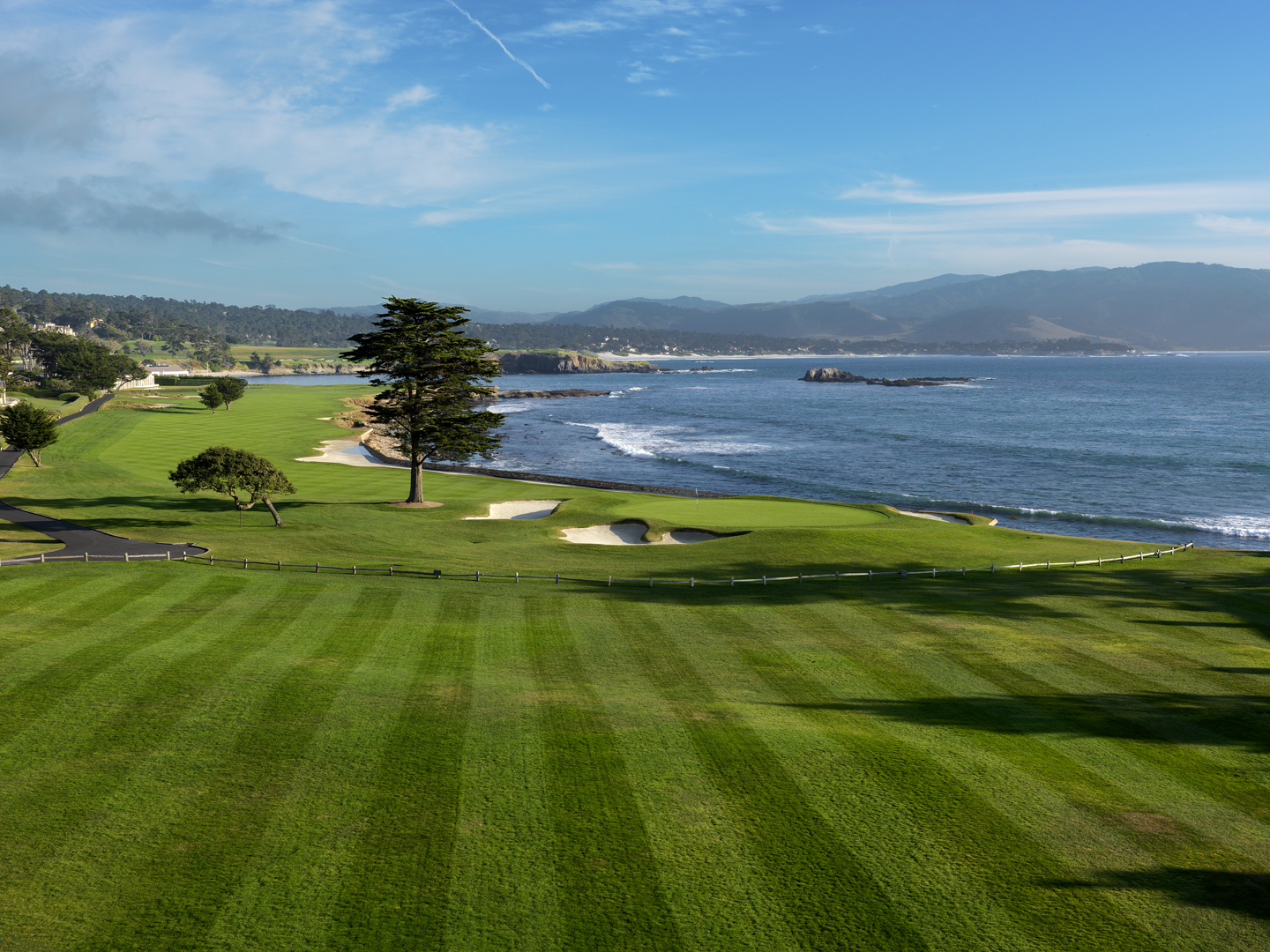
Pebble’s only staging of the Tour Championship took place in November, but it was one to remember, when Curtis Strange edged Tom Kite in a playoff. Rain delays and darkness forced the playoff into Monday, which began at the par-four 16th. Strange ended it in dramatic fashion, planting a long iron to two feet at Pebble’s fabled 17th. With the birdie and the victory, Strange became the first golfer to earn more than $1 million in a PGA Tour season.
2. Pinehurst Resort (No. 2)—Pinehurst, N.C.
Year(s) hosted: 1991, 1992
Donald Ross’s Sandhills masterpiece dates to 1907 in its present form. It has been the site of four U.S. Opens, the 1936 PGA Championship, the 1951 Ryder Cup, and nearly every other significant championship in tournament golf. Pinehurst No. 2 rolls gently and spaciously through tall Longleaf pines. Holes culminate in “inverted saucer” greens that have confounded the game’s very best since they were first grassed in 1935. Ahead of the 2014 U.S. Open, a Coore & Crenshaw restoration brought back the tawny-edged fairways and native roughs last seen in the 1940s.
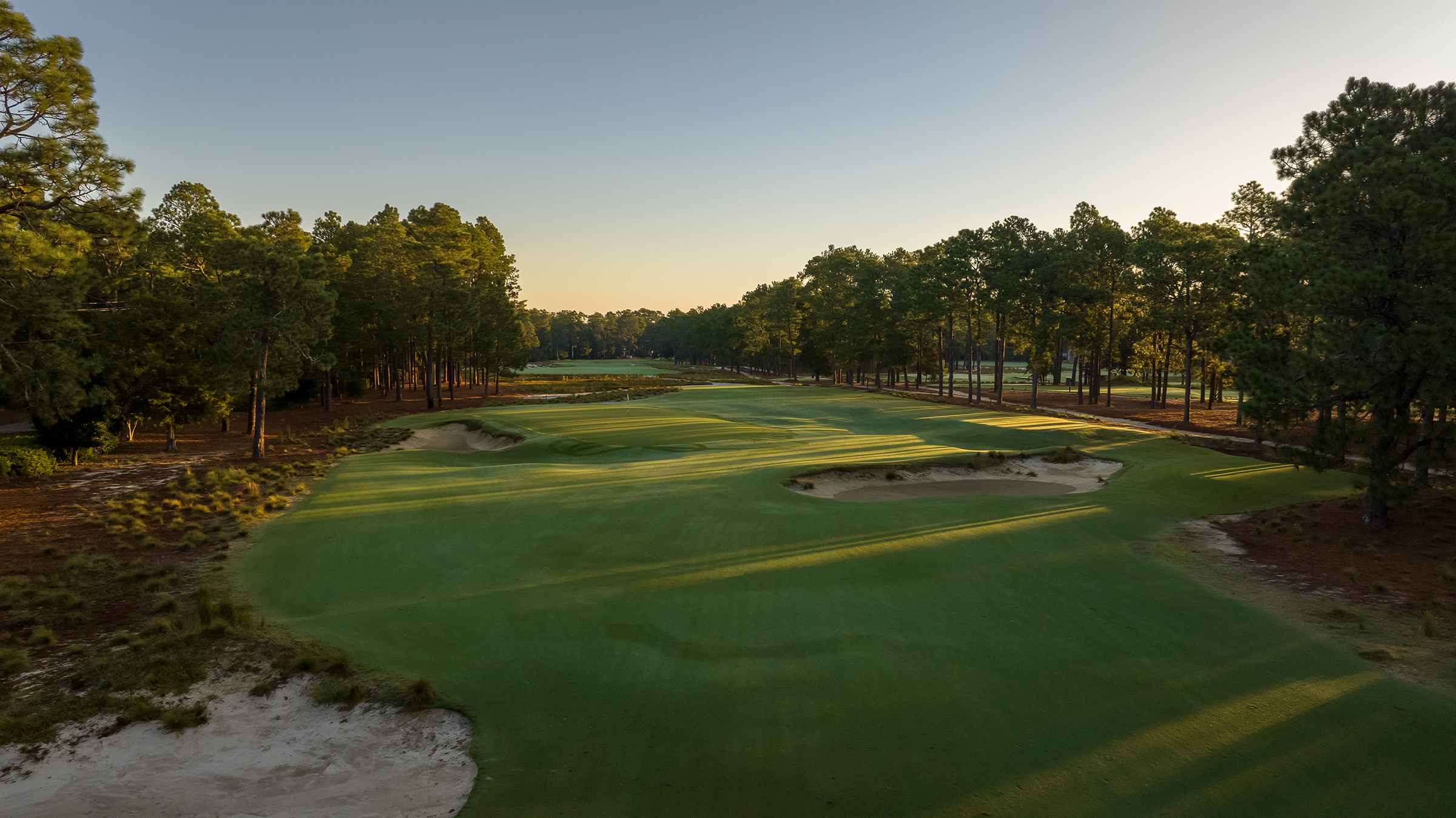
In the first ever Tour Championship (previously the event was known as the Nabisco Championship) Craig Stadler captured the 1991 edition in a playoff with Russ Cochran. Stadler stuck his tee shot to eight feet on the second playoff hole, the par-three 17th, and sank the birdie putt, giving the Walrus his first win on U.S. soil in seven years.
3. Southern Hills Country Club—Tulsa, Okla.
Year(s) hosted: 1995, 1996
Ranked in America’s top 30 by several leading authorities, Southern Hills is a 1936 Perry Maxwell creation that received new accolades following a Gil Hanse restoration in 2019. Site of three U.S. Opens and a quintet of PGA Championships—most recently in 2022 when Justin Thomas claimed the Wanamaker Trophy—7,556-yard, par-70 Southern Hills rolls out heat, humidity, wind, and stern rough framing fairways and greens. Maxwell’s distinctive oval and clamshell bunkers are perfectly placed. The 391-yard 9th and the 491-yard 18th both climb steep hills to reach the greens, the latter being one of the game’s toughest closing par fours. Tougher still is the creek-guarded 456-yard 12th which Ben Hogan once called the greatest par four in the U.S.
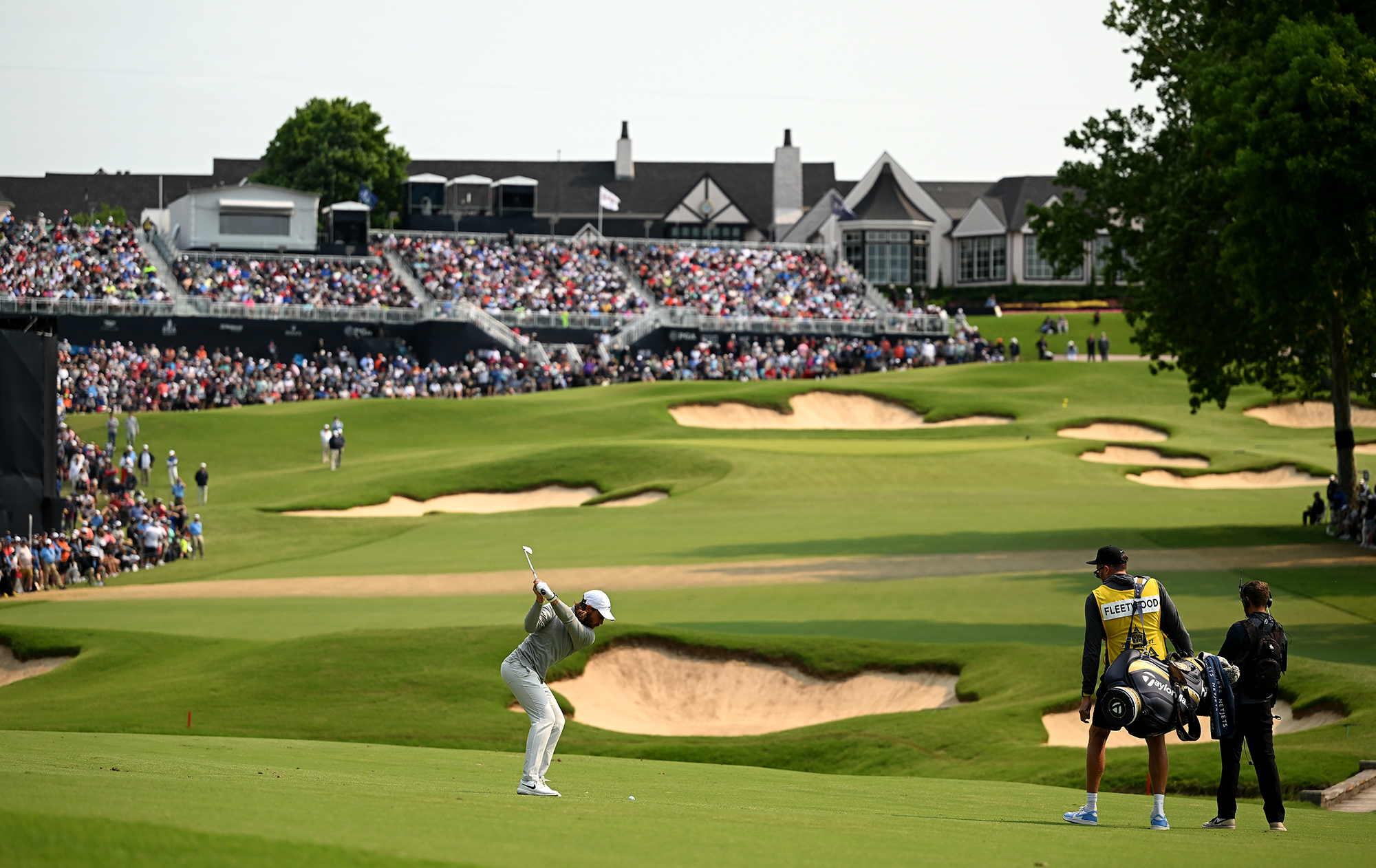
Patience was indeed a virtue at the 1995 event, as Billy Mayfair was the only golfer to match par over four rounds at brutal, breeze-addled Southern Hills. A closing 3-over-par 73 was enough to clinch the title by three shots over Corey Pavin and Steve Elkington during a week where the course yielded only 14 sub-par rounds. It was the first PGA Tour stop in 14 years where not a single player broke par for the duration.
4. Olympic Club (Lake)—San Francisco, Calif.
Year(s) hosted: 1993, 1994
Laid out on the side of a hill overlooking Lake Merced, its fairways hemmed in by thousands of cypress and eucalyptus trees, its landing areas bracketed by wrist-fracturing rough, Olympic has proved to be an imposing test for five U.S. Opens. On fog-free days, the 247-yard par-three 3rd enjoys stellar views of the Golden Gate Bridge. A 2023 restoration by Gil Hanse and Jim Wagner boosted visuals and variety, widened fairways, added back fairway bunkers, and expanded greens, all as the club looked ahead at staging the 2025 U.S. Amateur, the 2028 PGA Championship, and the 2033 Ryder Cup.
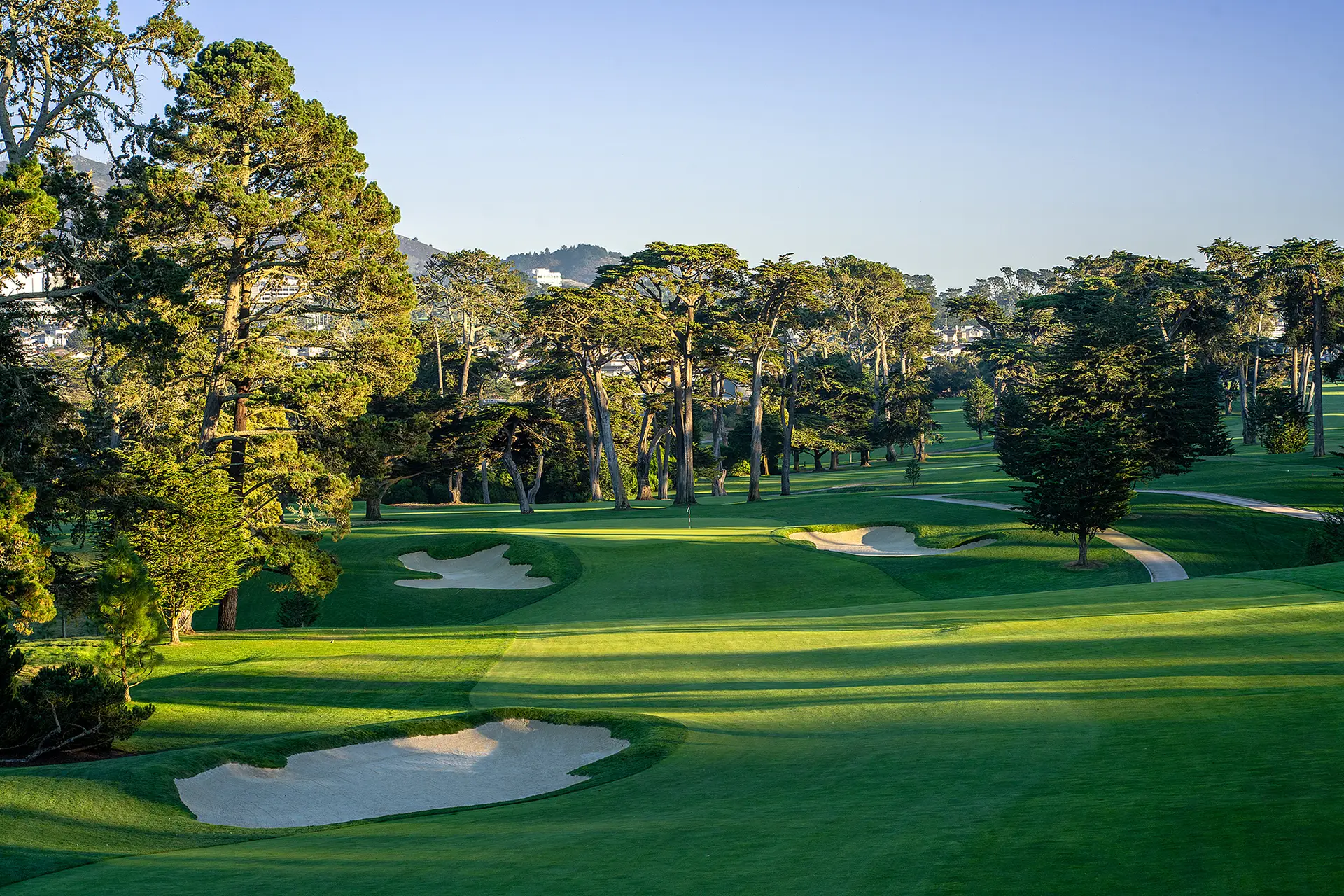
Mark McCumber, 43, and Fuzzy Zoeller, 42, were locked in a forty-something duel in 1994, with McCumber two ahead with two holes to play. When Zoeller birdied 17 and McCumber three-putted 18 from the back fringe, they headed to a playoff. On the first playoff hole, the short, uphill par-four 18th, Zoeller stroked a massively long, uphill birdie putt to tap-in distance. On the same line, McCumber then drilled his birdie putt, by his estimate 45 to 50 feet, into the heart of the hole for the victory.
5. Harbour Town Golf Links—Hilton Head Island, S.C.
Year(s) hosted: 1989
A favorite of PGA Tour pros for more than 50 years, Harbour Town boasts the iconic candy cane-striped lighthouse that backdrops the 18th hole—and so much more. A place of subtle beauty, this is a shotmaker’s paradise where power takes a backseat to precision. Mixing live oaks, lagoons, tiny greens, bunkers banked by railroad ties, and a closing stretch along the Calibogue Sound, this Pete Dye/Jack Nicklaus collaboration delights and terrorizes at every turn.
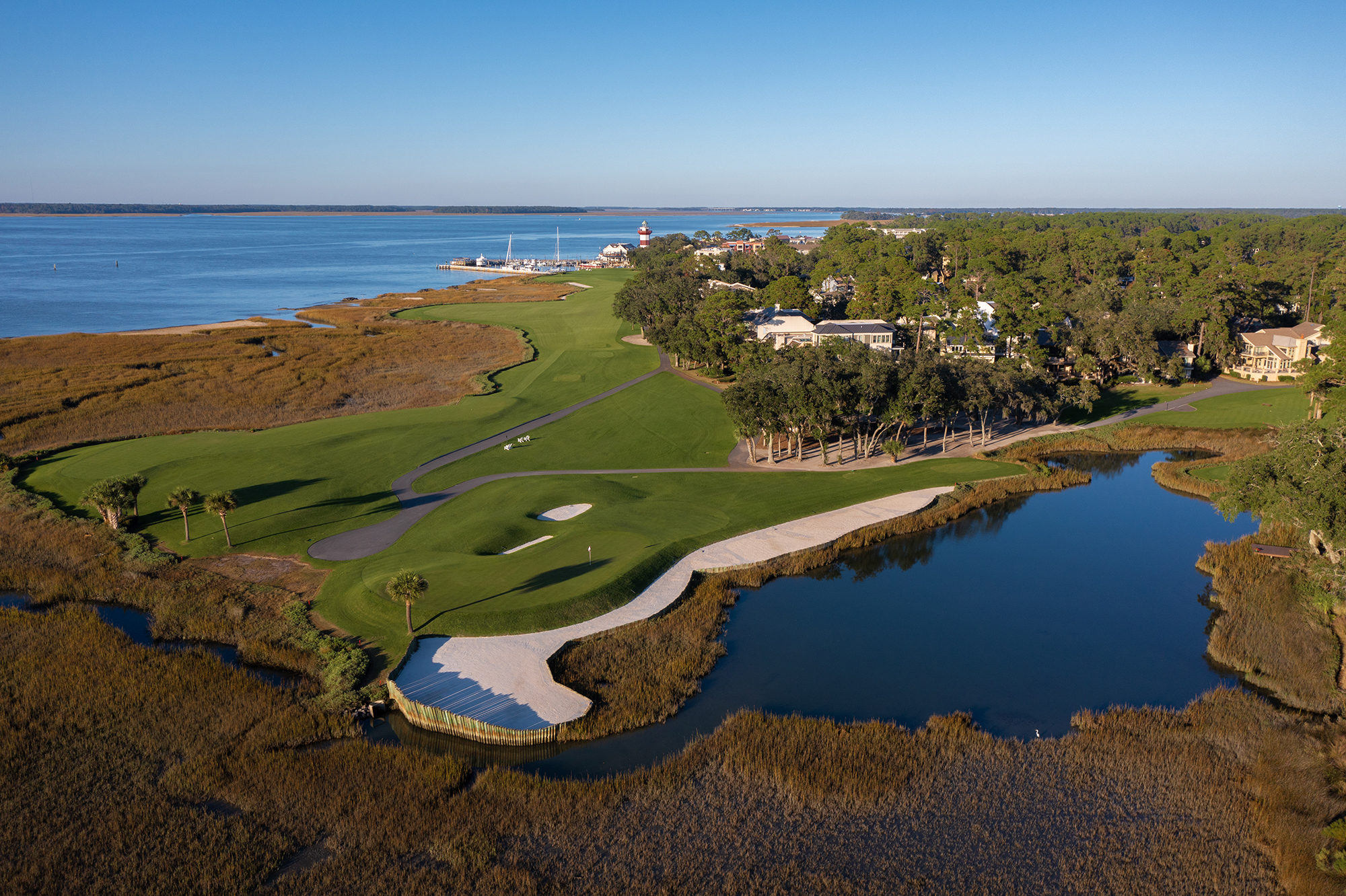
In 1989, Harbour Town doubled the fun. Payne Stewart grabbed the springtime tournament known as the MCI Heritage Golf Classic, easing past Kenny Perry by five shots, with a winning score of 16-under-par, 268. In late October of 1989, Harbour Town found itself in hosting mode again, when the Tour Championship—then called the Nabisco Championship—came calling. The Nabisco was supposed to have remained at Pebble Beach in 1989 after Pebble hosted in 1988, but according to a contemporary Sports Illustrated account, when the PGA Tour drew up the 1989 schedule, it had the Nabisco (Tour Championship) being played two weeks earlier. As it turned out, Pebble Beach was unavailable in that time slot, so Harbour Town filled in. Payne Stewart came close to winning again, but lost to Tom Kite in a playoff, after both men had finished at 8-under-par, 276.
6. East Lake Golf Club—Atlanta, Ga.
Year(s) hosted: 1998, 2000, 2002, 2004–present
Once better known as the club where Bobby Jones learned to play, and then as host to the 1963 Ryder Cup, East Lake is now a staple for golf fans as the permanent host to the season-ending Tour Championship for the PGA Tour. Rees Jones restored much of the 1913 Donald Ross flavor to the compact layout in 1994 and Andrew Green took the restoration one giant step further in 2024, basing his work on a set of 1949 aerial photos. Perhaps the most famous hole on the course is the 211-yard par-three 15th, which features a near-island peninsula green, which served as the green at the par-five 16th on East Lake’s original course, a 1908 Tom Bendelow design, with the hole playing in a different direction.
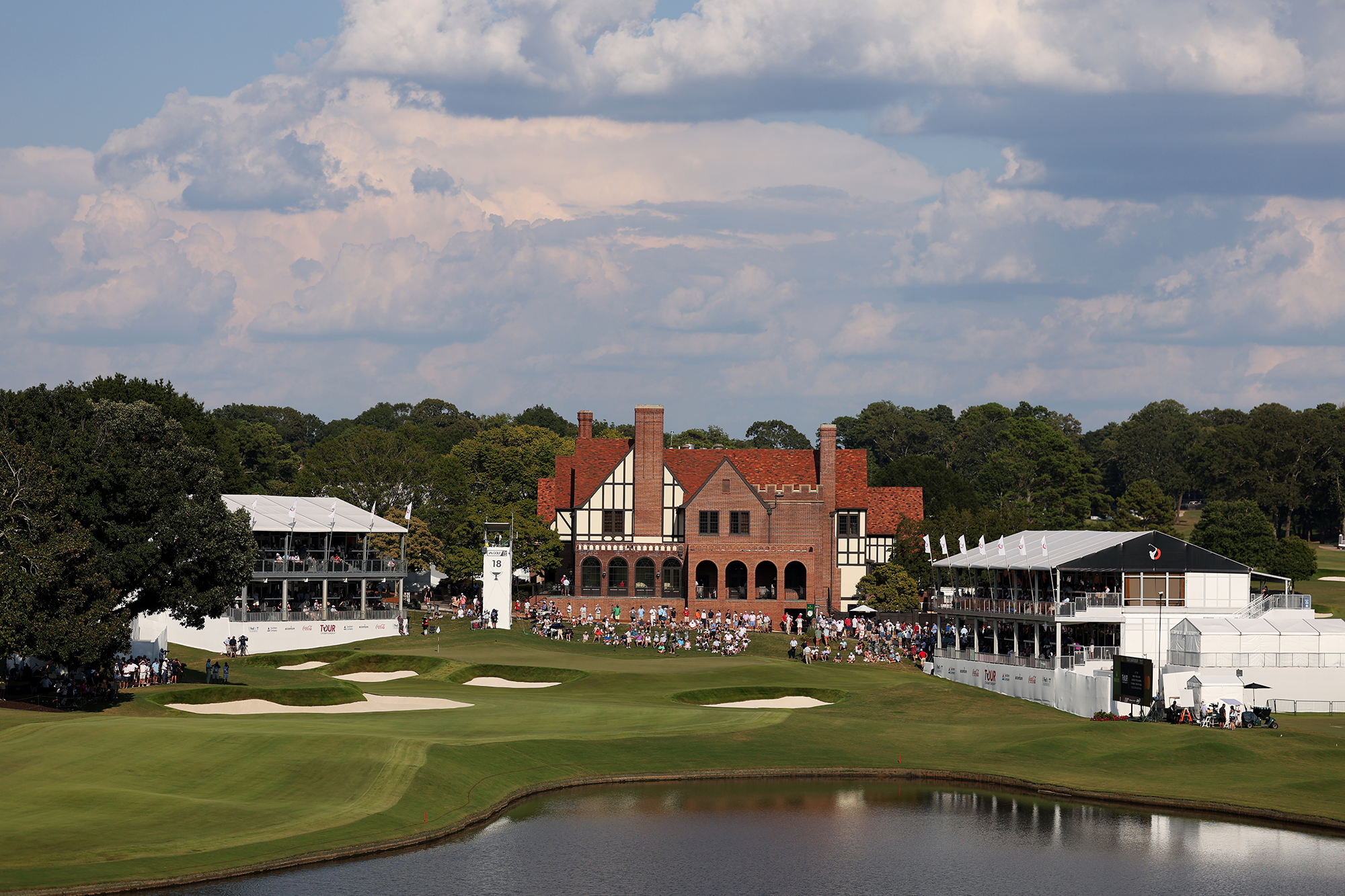
It’s hard to imagine any moment bigger than Bill Haas saving par—with a miraculous splash shot from a greenside lake—at the second playoff hole in 2011, a playoff he would win with a par at the 18th to defeat Hunter Mahan. Nonetheless, Tiger Woods eclipsed that moment with a sentimental win for the ages in 2018. It was Tiger’s first triumph in five years, and career win number 80. There wasn’t a dry eye in the house as Tiger tapped in to clinch the victory by two shots over Billy Horschel.
7. Champions Golf Club (Cypress Creek)—Houston, Texas
Year(s) hosted: 1990, 1997, 1999, 2001, 2003
Jumbo-sized, flat fairways that pair perfectly with similarly scaled, if more undulating greens, are accented by benign bunkers, a smattering of low-key creeks and ponds and vice-like Bermuda rough, which makes for a challenging, if not particularly dramatic design palette. In 2018, former Nicklaus associate Chet Williams renovated greens and bunkers on the 7,301-yard, par-71 Cypress Creek, which was originally designed in 1959 by Ralph Plummer. Extra credit though, for being an outstanding club, thanks to co-founders Jack Burke Jr. and Jimmy Demaret, and for hosting big-time events such as the 1967 Ryder Cup, the 1969 U.S. Open, and the 2020 U.S. Women’s Open.
Bigger names David Duval (1997) and Tiger Woods (1999) both captured Tour Championship victories at Champions, yet the standout performance belongs to the 2003 winner, Chad Campbell. Thanks to a course- and tournament-record 10-under-par 61 on Saturday and a closing 3-under-par 68 on Sunday, Campbell cruised to a three-shot triumph over Charles Howell III. It was the first time anyone had made the Tour Championship his first career victory and Campbell’s 16-under-par 268 total was the lowest score in relation to par in the 17-year history of the Tour Championship.
8. Oak Hills Country Club—San Antonio, Texas
Year(s) hosted: 1987
Lowest ranked among the eight courses that have hosted the Tour Championship yet admired and even beloved by many of the game’s greats, Oak Hills began life in 1921 as the Alamo Country Club, designed by no less than A.W. Tillinghast. When it reopened after World War II, the club’s name changed to Oak Hills. A frequent site of the PGA Tour’s Texas Open, Oak Hills served as host 23 times between 1961 and 1994, when winners included Hall-of-Famers Arnold Palmer, Hale Irwin, Lee Trevino, Ben Crenshaw, Mark O’Meara, and Nick Price. Home to nine events on the Senior PGA Tour from 2002–10 and to the 2025 U.S. Senior Amateur, Oak Hills has always emphasized precise shotmaking over brute force. In 2018, architect Tripp Davis restored Tillinghast’s best features while ushering in sensitive alterations to accommodate the modern game. At 6,886 yards, par 71, the course challenges with mature oaks, undulating terrain and deep bunkers, along with an unusual closer, a par three of 204 yards.
Tom Watson, a six-time PGA Tour Player of the Year between 1977 and 1984, broke a three-year victory drought at the first season-ending Tour Championship, then known as the Nabisco Championship. Firing rounds of 65–66–69–68 for a 12-under-par 268 on the 6,556-yard course, Watson beat Chip Beck by two shots, then flung his logo-less yellow visor into the sky, before collecting his $360,000 winner’s check.



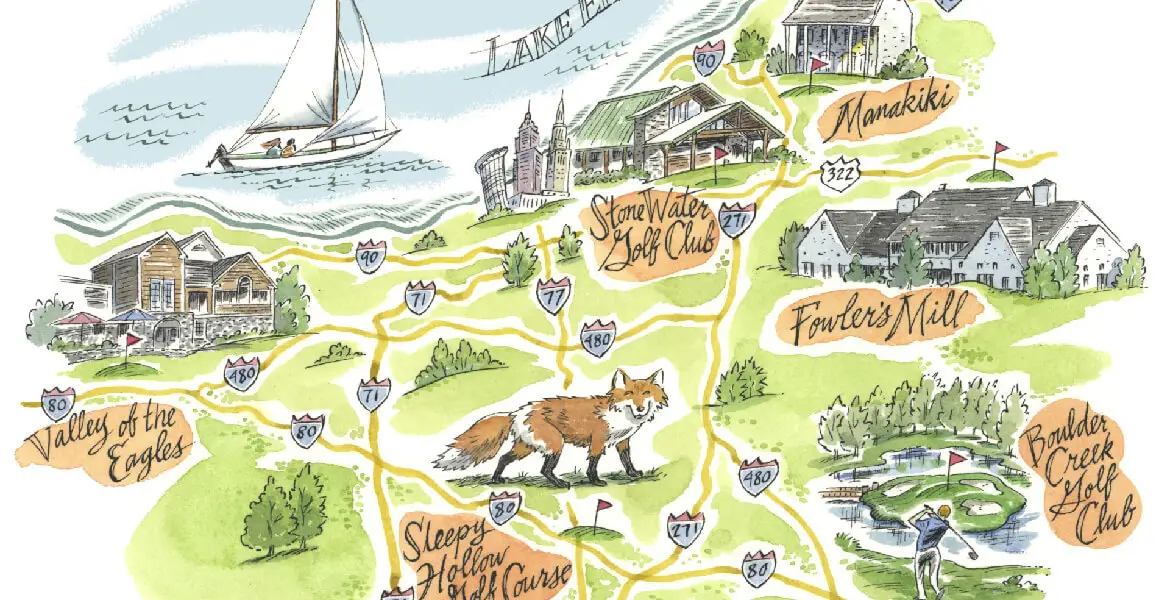
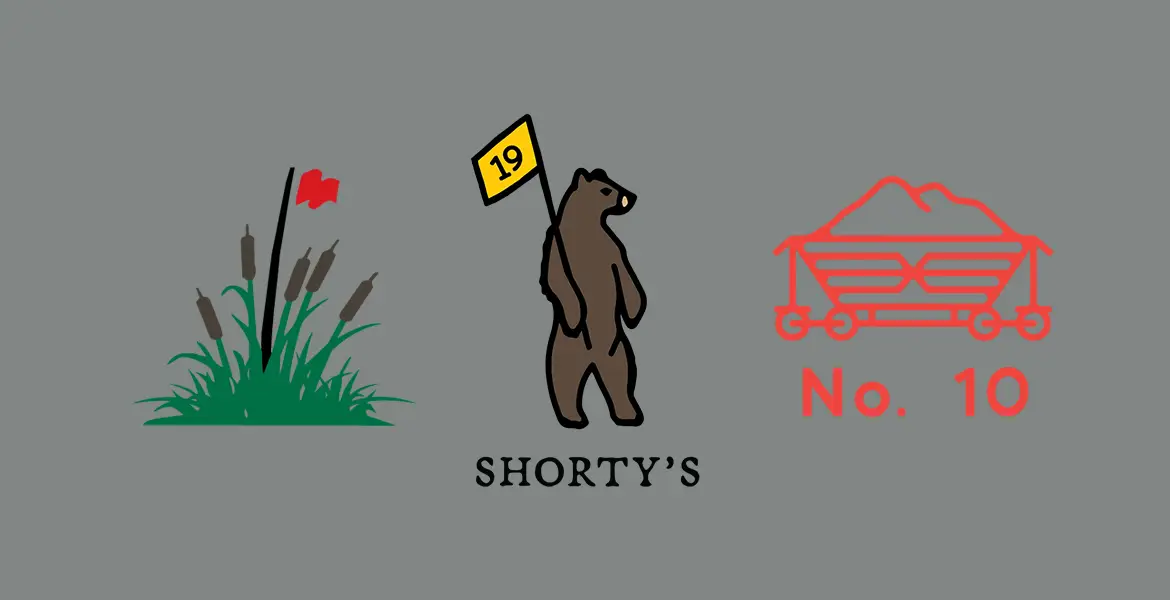
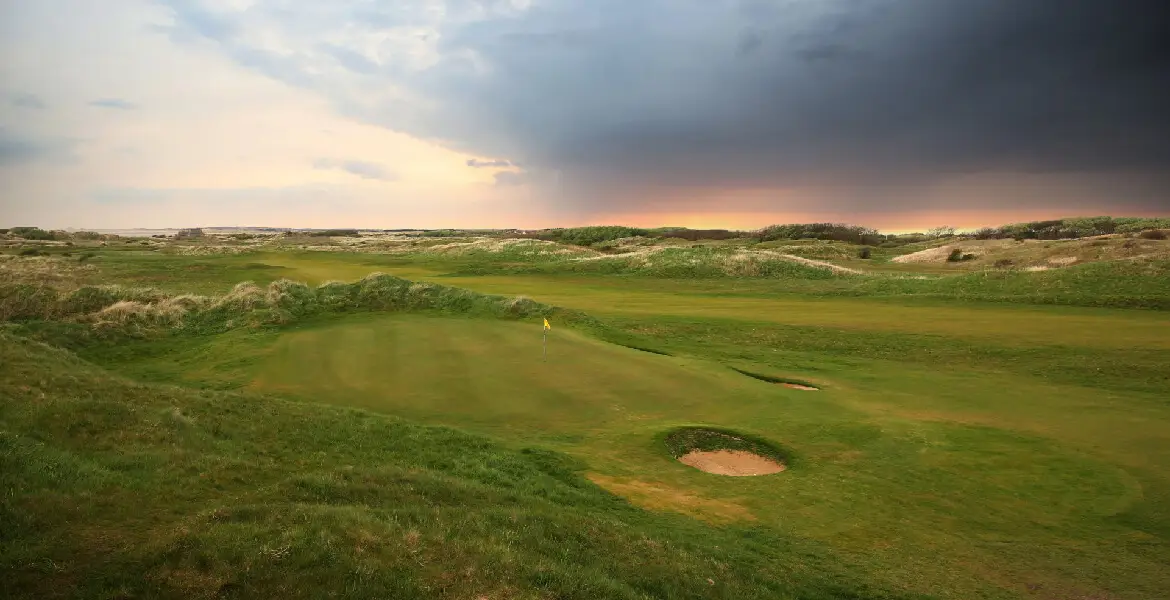
Wow, great venues but I hope The Tour Championship stays at East Lake Golf Club for a long time.
I would rather see all the playoff venues including the Championship rotated amongst other courses every few years to change it up. Honestly, East Lake does nothing for me despite its long history with the PGA. I’m ok with the playoff sites and Championship site rotating venue locations over the years.
The winner of the 1990 Tour Championship at the Champions Golf Club deserves to be mentioned.
Why? Because Jodie Mudd also won the Players Championship in 1990 and is still the only golfer to have won both in the same year. He made a Tiger-like putt on the 72nd to tie Billy Mayfair and then
won the playoff.